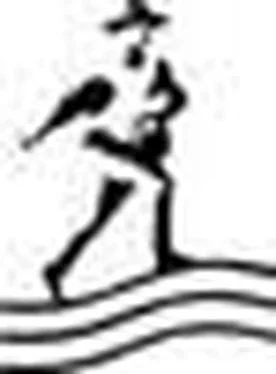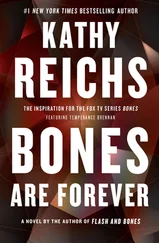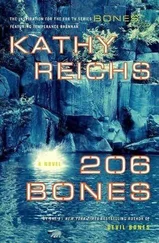Kathy Reichs - Bare Bones
Здесь есть возможность читать онлайн «Kathy Reichs - Bare Bones» весь текст электронной книги совершенно бесплатно (целиком полную версию без сокращений). В некоторых случаях можно слушать аудио, скачать через торрент в формате fb2 и присутствует краткое содержание. Жанр: Старинная литература, на английском языке. Описание произведения, (предисловие) а так же отзывы посетителей доступны на портале библиотеки ЛибКат.
- Название:Bare Bones
- Автор:
- Жанр:
- Год:неизвестен
- ISBN:нет данных
- Рейтинг книги:4 / 5. Голосов: 1
-
Избранное:Добавить в избранное
- Отзывы:
-
Ваша оценка:
- 80
- 1
- 2
- 3
- 4
- 5
Bare Bones: краткое содержание, описание и аннотация
Предлагаем к чтению аннотацию, описание, краткое содержание или предисловие (зависит от того, что написал сам автор книги «Bare Bones»). Если вы не нашли необходимую информацию о книге — напишите в комментариях, мы постараемся отыскать её.
Bare Bones — читать онлайн бесплатно полную книгу (весь текст) целиком
Ниже представлен текст книги, разбитый по страницам. Система сохранения места последней прочитанной страницы, позволяет с удобством читать онлайн бесплатно книгу «Bare Bones», без необходимости каждый раз заново искать на чём Вы остановились. Поставьте закладку, и сможете в любой момент перейти на страницу, на которой закончили чтение.
Интервал:
Закладка:
The bags were waiting. So were the cameras and the items needed to accessorize my ensemble: paper apron and mask, plastic goggles, latex gloves.
Fetching.
I shot 35-millimeter prints, backups with the Polaroid, then asked Hawkins to X-ray both bags. I wanted no surprises.
Twenty minutes later he wheeled the bags back and snapped a half dozen plates onto a light box. We studied the gray-on-grayer jumble.
Bones mixed with a pebbly sediment. Nothing densely opaque.
“No metal,” Hawkins said.
“That’s good,” I said.
“No teeth,” Hawkins said.
“That’s bad,” I said.
“No skull.”
“Nope,” I agreed.
After donning my protective gear, sans goggles, I opened the twist tie and emptied the uppermost bag onto the table.
“Holy buckets. Those look like the real deal.”
In all, there were eight semi-fleshed hands and feet, all truncated. I placed them in a plastic tub and asked for X rays. Hawkins carried them off, shaking his head and repeating his comment.
“Holy buckets.”
Slowly, I spread the remaining bones as best I could. Some were free of soft tissue. Others were held together by leatherized tendon and muscle. Still others retained remnants of decomposing flesh.
Sometime in late Miocene, roughly seven million years ago, a line of primates began experimenting with upright posture. The locomotor shift required some anatomic tinkering, but in a few epochs most kinks had been ironed out. By the Pliocene, roughly two million years ago, hominids were running around waiting for someone to invent Birkenstocks.
The move to bipedalism had its downside, of course. Lower back pain. Difficult childbirth. The loss of a grasping big toe. But, all things considered, the adjustment to upright worked well. By the time Homo erectus cruised the landscape looking for mammoth, approximately one million years back, our ancestors had S-shaped spines, short, broad pelves, and heads sitting directly on top of their necks.
The bones I was viewing didn’t fit that pattern. The hip blades were narrow and straight, the vertebrae chunky, with long, swooping spinous processes. The limb bones were short, thick, and molded in a way not seen in humans.
I drew a sigh of relief.
The victims in the bag had run on all fours.
Often bones delivered to me as “suspicious” turn out to be those of animals. Some are leftovers from Sunday dinner. Calf. Pig. Lamb. Turkey. Others are relics of last year’s hunt. Deer. Moose. Duck. Some are the remains of farm animals or family pets. Felix. Rover. Bessie. Old Paint.
Boyd’s find fell into none of those categories. But I had a hunch.
I began sorting. Right humeri. Left humeri. Right tibiae. Left tibiae. Ribs. Vertebrae. I was almost through when Hawkins arrived with the X rays.
One glance confirmed my suspicion.
Though the “hands” and “feet” looked jarringly human, skeletal differences were evident. Fused navicular and lunate bones in the hands. Deeply sculpted ends on the metatarsals and phalanges of the feet. Increasing digit length from the inside toward the outside.
I pointed out the latter trait.
“In a human foot, the second metatarsal is the longest. In a human hand, it’s the second or third metacarpal. With bears, the fourth is the longest in both.
“Makes it look like the critter’s reversed.”
I indicated pads of soft tissue on the soles of the feet.
“A human foot would be more arched.”
“So what is it, Doc?”
“Bear.”
“Bear?”
“Bears, I should say. I’ve got at least three left femora. That means a minimum of three individuals.”
“Where are the claws?”
“No claws, no distal phalanges, no fur. That means the bears were skinned.”
Hawkins chewed on that thought for a while.
“And the heads?”
“Your guess is as good as mine.”
I flipped off the light box and returned to the autopsy table.
“Bear hunting legal in this state?” Hawkins asked.
I peered at him over my mask.
“Your guess is as good as mine.”
It took a couple of hours to sort, inventory, and photograph the contents of the first sack
Conclusion: Bag one contains the partial remains of three Ursus americanus. Black bear. Species verification using Gilbert’s Mammalian Osteology and Olsen’s Mammal Remains from Archaeological Sites. Two adults and one juvenile represented. No heads, claws, distal phalanges, teeth, or outer integument present. No indicators of cause of death. Cut marks suggest skinning with a nonserrated double-edged blade, probably a hunting knife.
Between bags I took a break to phone US Airways.
Of course the flight was on time. Airlines operate to the nanosecond when the passenger or pickup is running late.
I looked at my watch. Eleven-twenty. If bag two held no surprises I could still make it to the airport on time.
I popped a can of Diet Coke and took a Quaker caramel-nut granola bar from a box I’d stashed in a kitchen cabinet. As I chewed I studied the Quaker pilgrim. He beamed at me with such a kindly smile. What could possibly go wrong?
Returning to the autopsy room, I glanced again at the X rays of bag two. Seeing nothing suspicious, I untied the knotted ends and upended the sack.
A soupy conglomerate of bone, sediment, and decomposing flesh oozed onto the stainless steel. A stench filled the air.
Readjusting my mask, I began poking through the mess.
More bear.
I lifted a smaller long bone that was clearly not bear. It felt light in my hand. I noted that the outer envelope of bone was thin, the marrow cavity disproportionately large.
Bird.
I began a triage.
Ursus.
Aves.
Time passed. My shoulders began to ache. At one point I heard a phone. Three rings, then silence. Either Hawkins had answered or the service had picked up.
When I’d separated by taxonomic affiliation, I started an inventory of the new bear bones. Again, there were no heads, claws, skin, or fur.
An hour later the bear count had risen to six.
I rolled that around in my head.
Was it legal to hunt black bears in North Carolina? Six seemed like a lot. Were there limits? Did these remains represent one slaughter, or were they the accumulation of multiple outings? The unevenness in decomposition supported that hypothesis.
Why had six headless carcasses been bundled in trash bags and buried in the woods? Had the bears been killed for their skins? Were their heads kept as trophies?
Was there a bear season? Had the hunting taken place during a legally approved period? When? It was hard to tell how long the animals had been dead. Until Boyd came along, the plastic had acted as an effective barrier to insects and other scavengers that hasten decomposition.
I was turning to the bird bones when voices floated in from the corridor. I stopped to listen.
Joe Hawkins. A male voice. Hawkins again.
Holding gloved hands in the air, I pushed the door with my bum and peeked out.
Hawkins and Tim Larabee were engaged in conversation outside the histology room. The ME looked agitated.
I was retreating when Larabee spotted me.
“Tempe. I’m glad to see you. I’ve been phoning your cell.” He was wearing jeans and a tweedy golf shirt with black collar and trim. His hair was wet, as though he’d just showered.
“I don’t bring my purse to an autopsy.”
He looked past me to the table.
“That the stuff from out near Cowans Ford?”
“Yes.”
“Animal?”
“Uh-huh.”
“Good. I need your help on something else.”
Oh, no.
“I got a call from the Davidson PD about an hour ago. A small plane went down just past one.”
Читать дальшеИнтервал:
Закладка:
Похожие книги на «Bare Bones»
Представляем Вашему вниманию похожие книги на «Bare Bones» списком для выбора. Мы отобрали схожую по названию и смыслу литературу в надежде предоставить читателям больше вариантов отыскать новые, интересные, ещё непрочитанные произведения.
Обсуждение, отзывы о книге «Bare Bones» и просто собственные мнения читателей. Оставьте ваши комментарии, напишите, что Вы думаете о произведении, его смысле или главных героях. Укажите что конкретно понравилось, а что нет, и почему Вы так считаете.










